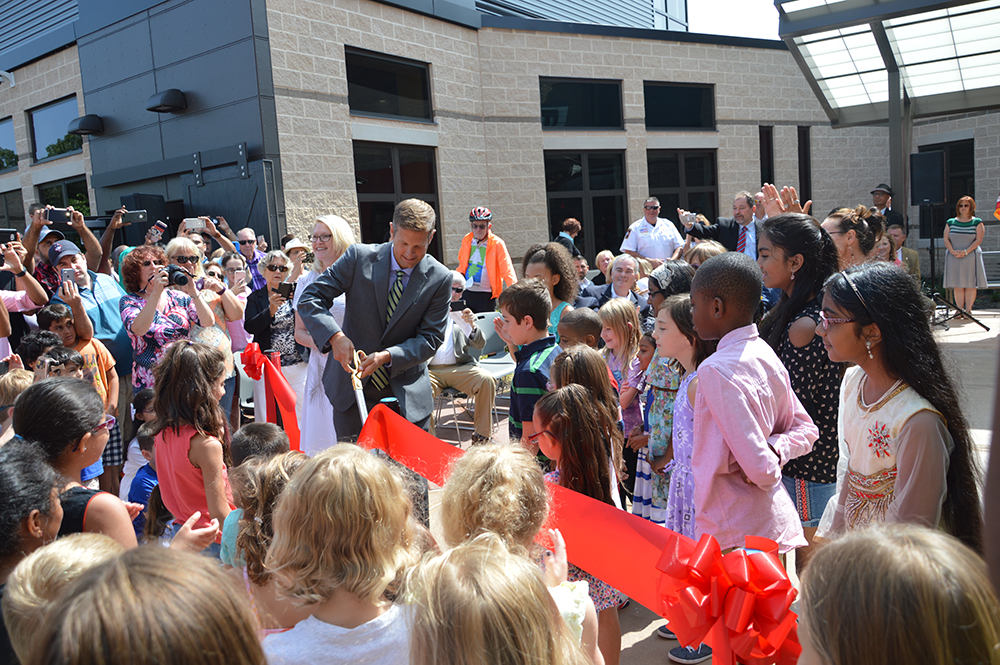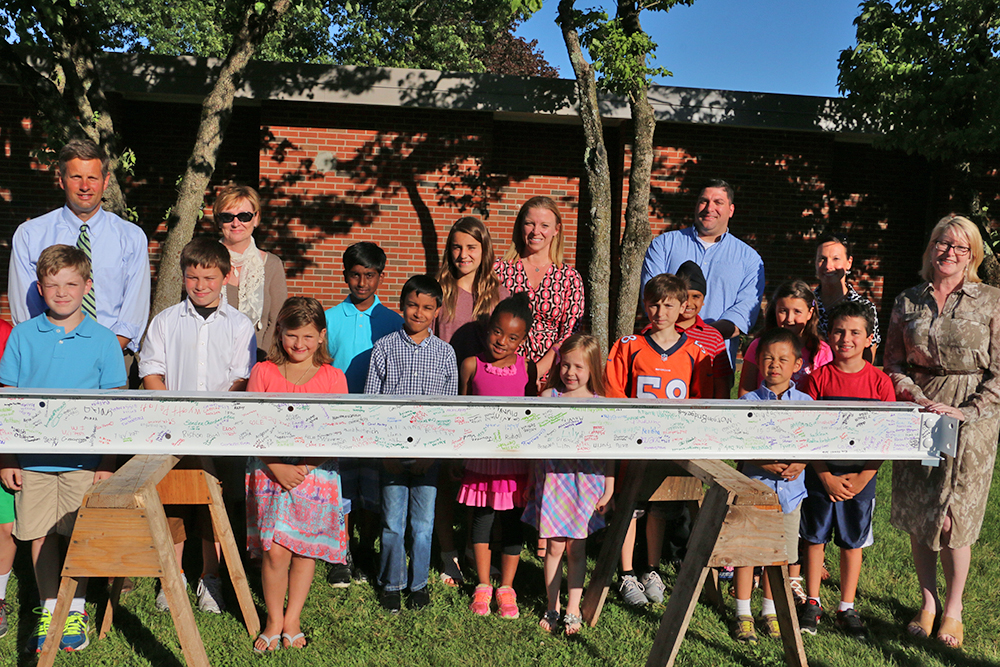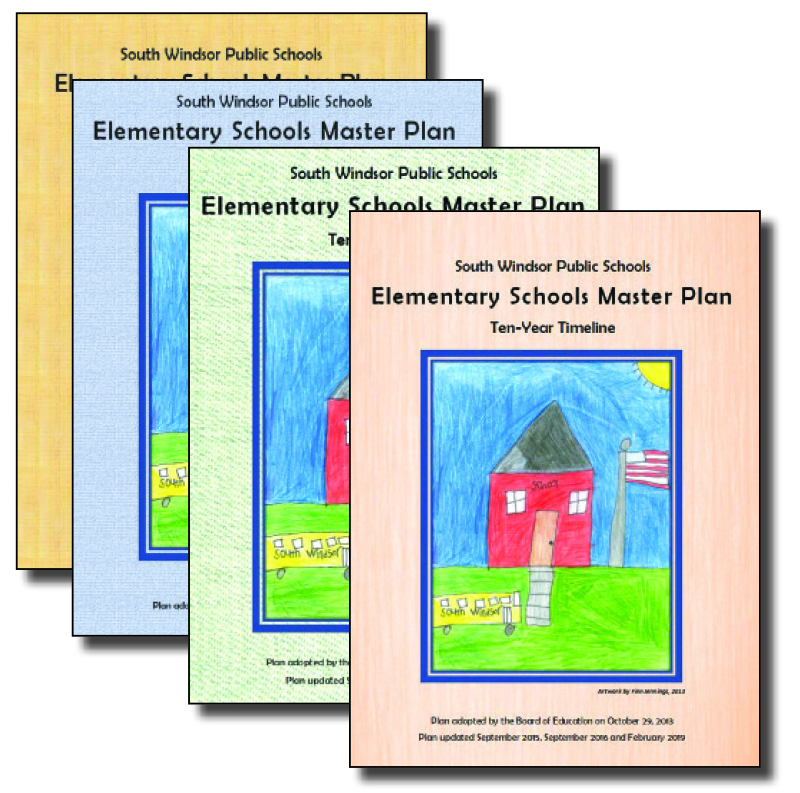
South Windsor, CT In a small suburban town in north central Connecticut, a school district is achieving something not often seen in other communities. Since adopting a comprehensive Elementary Facilities Master Plan in 2013 to address its five aging elementary schools, South Windsor Public Schools has closed a school, built and opened one brand new school, and begun building two more new schools. And they’re not done yet. Subject to approval through referendum in March 2020, the district hopes to complete the final phase of its plan by building a fourth new elementary school. Many towns look at South Windsor’s success and wonder, “How’d they do that?”
The path that has led the district to this milestone has been a long one. Prior to 2013, there had been two attempts to pass elementary schools referenda in South Windsor: a $92.1 million referendum defeated in 2004, and a $117 million referendum defeated in 2008. The 2008 referendum called for the community to commit to funding all four schools at once, and the options submitted for consideration were cited as complicated and confusing. Community members indicated they didn’t fully understand the deficiencies within the existing schools, nor the benefits offered by the new schools. And the thought of closing a school simply had too much resistance.
Knowing inaction was not an option, the board of education persevered. In its 2011-2014 Strategic Plan, the board called for the development of a “long-range elementary facilities plan that promotes a safe, engaging learning environment that is accessible to all students and community members.” Superintendent of Schools, Dr. Kate Carter, was charged with researching and devising a plan that not only made sense for the district, but created “win-win” conditions for the community.
For more than a year, Dr. Carter worked with board of education and town staff while tapping into the expertise of architects, engineers and school construction professionals to develop the plan. An elementary facilities feasibility study was conducted to analyze the current conditions of each of the elementary facilities and building sites. Notably, Eli Terry (a model all-electric school when it opened in 1965) still had 100% electric heat. Philip R. Smith, Pleasant Valley and Orchard Hill were multi-level schools that weren’t accessible to people with physical disabilities. All schools needed significant upgrades to deal with dated mechanical systems that were at or near end of life. And all but Wapping relied on “temporary” portable classrooms that had been in use for well over 20 years.
The cultivation of community input and support was also a big part of the development process. Countless local stakeholders were consulted to better understand community needs that could be addressed. This initial feedback and buy-in helped shape what became the district’s “Ten-Year Elementary Facilities Master Plan.”
In her proposal to the board of education, the superintendent’s recommendation offered a long-range, three-phase approach which utilized staggered referenda. Due to the decreasing enrollment identified at the time, the plan reflected the reduction of its elementary schools from five schools to four. The “1 - 2 - 1” referenda schedule called for addressing one school in the first referendum, two schools in the second referendum, and the final school in the third referendum.
A ten-year timeline was created to outline the three phases of the project, by year and by school. It reflected key deliverables and milestone events, and included projected enrollment by school for each year in the process. As feedback from the prior referendum indicated that people did not fully understand deficiencies in the existing buildings, the timeline also identified school conditions present at the time of its adoption.
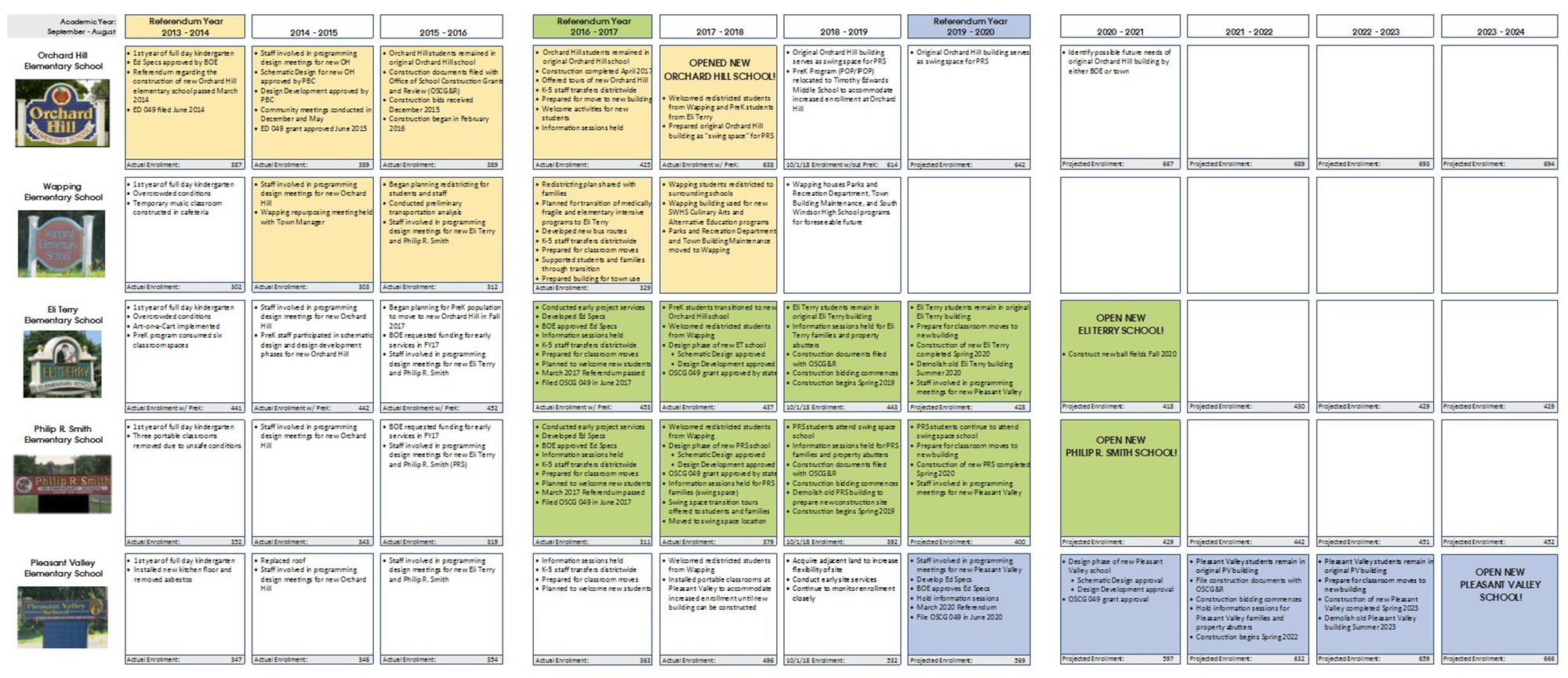
Lauded for its clarity, transparency and accessibility, the ten-year timeline document has become one of the driving forces in garnering community support. Since its adoption in 2013, it has been updated three times, each time reflecting modifications made along the way. The timeline has purposefully captured and retained progress to date so the community could follow along in the journey. “Branding” was also a key element for the marketing of this project, with every publication and communication utilizing the now iconic schoolhouse drawing submitted by one of South Windsor’s students.
The 1 - 2 - 1 referenda schedule translated into three distinct phases:
Phase One included the construction of a new PK-5 elementary school for Orchard Hill by 2017, and the closing of Wapping which occurred upon the opening of the new school. The acreage and topography of the Orchard Hill campus allowed for new construction to occur on site while the original building remained standing. Students and staff remained in the original Orchard Hill building during construction. Once the new school opened, the former Orchard Hill was converted for use as “swing space” for other schools during their construction phases.
Wapping was the oldest of the town’s elementary schools, having been built in 1953 and without a major update since 1992. In addition to its age, the rationale for closing Wapping (versus any of the others) was based on its central location, its proximity to the town’s community center, and its value to the town in relation to other community needs. Its central location allowed for the most reasonable redistricting plan because Wapping was the only elementary school that bordered all four of the other elementary school districts.
Phase Two calls for the construction of two new K-5 elementary schools for Eli Terry and Philip R. Smith (PRS) by the year 2020. Eli Terry students and staff will remain in their original building while the new school is built. Following construction, the original Eli Terry building will be demolished and replacement playgrounds and ball fields will be constructed in its place.
By contrast, the existing PRS campus is not large enough to accommodate co-location during construction. Therefore, PRS students and staff were relocated to swing space in the original Orchard Hill building while their new school is built. Site preparation for this facility included demolition of the PRS school prior to construction.
Phase Three calls for the construction of a new elementary school for Pleasant Valley by 2023.
Key Elements of the Project’s Success
High Quality Project Professionals: The quality of, and collaboration by, the project professionals has been a driving force in the successful execution of the ten-year plan. Monthly meetings of the town’s Public Building Commission (PBC) - a group of dedicated, hard-working and knowledgeable volunteers - have contributed to the plan remaining on schedule and, so far to date, under budget! At every meeting, there has been a balance of district representation, town leadership and project professionals, including both former and current board of education members as well as the board’s director of facilities Patrick Hankard.
Both the board of education and the PBC are highly complimentary of all the project professionals who have been a part of this plan, particularly the key players which have included:
• Friar Associates, who conducted the original facility conditions study;
• Drummey Rosane Anderson (DRA), architect for Orchard Hill;
• Moser Pilon Nelson (MPN), architect for Eli Terry and Philip R. Smith;
• Gilbane Building Company, construction manager for all three schools; and
• Colliers International, owner’s representative for both Phase One and Phase Two.
Reflecting on the impact that project professionals have had on the success of Phase One and Phase Two, PBC chairman Matthew Montana noted that DRA and MPN each designed distinctive buildings that have exceeded town expectations; Colliers has worked effectively with the PBC and provided valued expertise; and Gilbane delivered a phase one building ahead of schedule and under budget.
Availability of Swing Space: The availability of swing space was deemed a particular strength of the plan. Unlike other communities which must pay for temporary portables or use other less desirable space, this plan allowed South Windsor students to occupy an actual school facility while their school is built. The “planful repurposing” of both Orchard Hill as swing space and Wapping as a space alternative for other agencies in town contributed to the win-win conditions sought by stakeholders prior to the plan’s design.
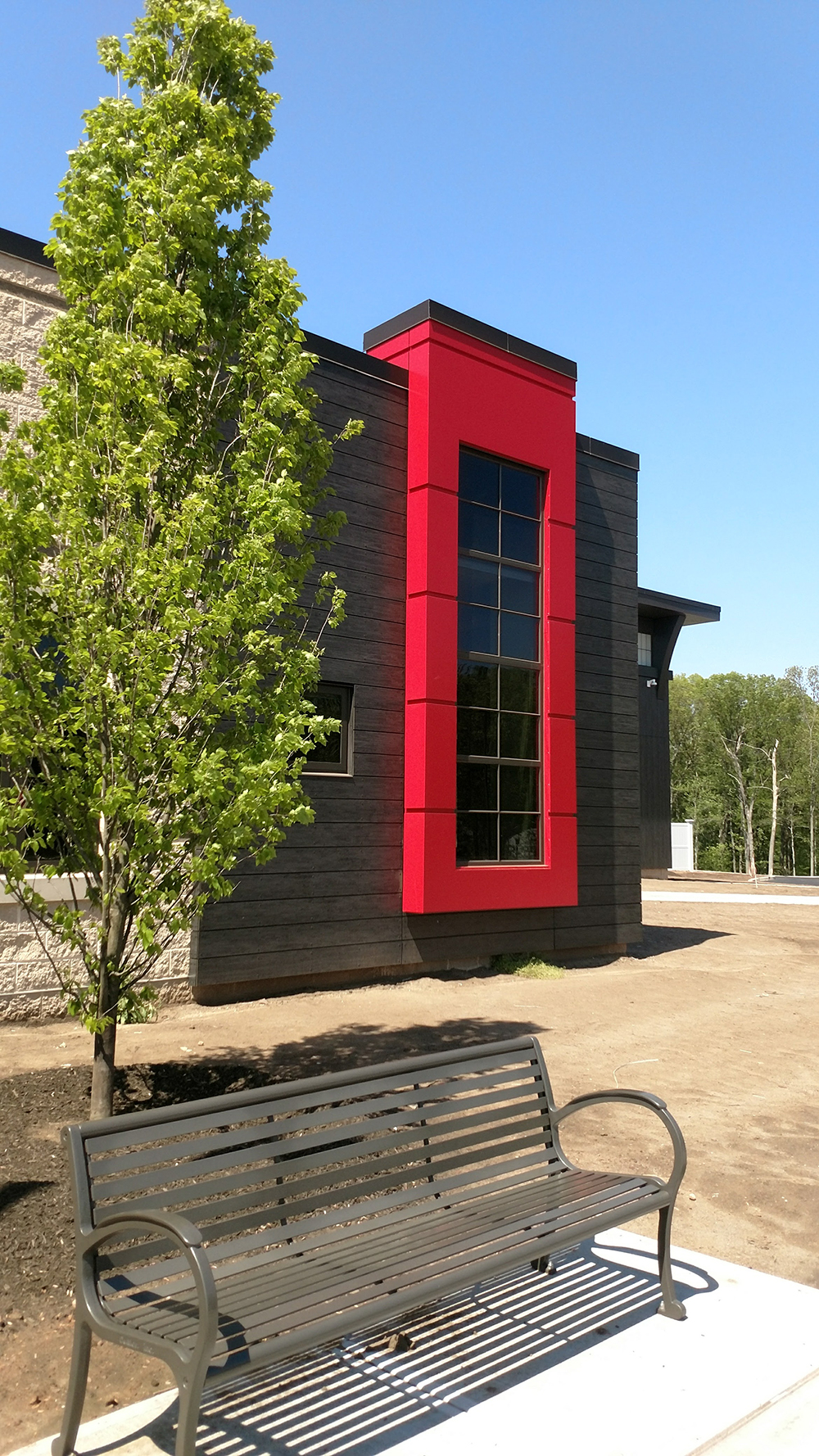 Consistent Leadership: Few school construction projects spanning ten years can claim supervision by the same superintendent of schools, and the value of Dr. Carter’s longevity as South Windsor’s superintendent cannot be overlooked. Dr. Carter is well respected and has earned a reputation as a trusted and transparent leader who is extremely committed to South Windsor, a town in which she is also a resident. The community’s trust in her leadership was a key factor in the plan being embraced. Dr. Carter has reflected that “building schools is about building relationships.” She has worked hard to forge these relationships and appreciates the invaluable contributions of the countless stakeholders who are part of the school construction process.
Consistent Leadership: Few school construction projects spanning ten years can claim supervision by the same superintendent of schools, and the value of Dr. Carter’s longevity as South Windsor’s superintendent cannot be overlooked. Dr. Carter is well respected and has earned a reputation as a trusted and transparent leader who is extremely committed to South Windsor, a town in which she is also a resident. The community’s trust in her leadership was a key factor in the plan being embraced. Dr. Carter has reflected that “building schools is about building relationships.” She has worked hard to forge these relationships and appreciates the invaluable contributions of the countless stakeholders who are part of the school construction process.
She has also followed through with a very hands-on approach. Since the plan’s inception, she has attended over 500 meetings and events associated with the ten-year plan. The state’s Department of Administrative Services, an important partner in both the development and the execution of this plan, has referred other school districts from across the state to Dr. Carter for her insights and expertise, and she’s been an invited panelist at several school construction forums.
Marc Sklenka, senior director and project manager of Colliers International, said that Dr. Carter is a powerful advocate, not only for the need but the proper execution of the program. “When the state of Connecticut sees South Windsor as the model school construction program, we know something is going well. The success of Dr. Carter’s leadership is evident as each phase is universally seen as a home run by the state, the voters of South Windsor, and most importantly, the children of South Windsor.”
Bi-Partisan Support from Town Leaders: In a letter to the community, the board of education stated that “We are confident that our plan is well-reasoned, responsible, responsive to community input, and simply makes sense for South Windsor’s children, families and taxpayers.” Indeed, on March 25, 2014, by a large margin, the citizens of the town voted in favor of constructing a new PK-5 elementary school for Orchard Hill: 75% of those who went to the polls voted “yes” in favor of the proposal. Three years later, despite a higher price tag due to the inclusion of two schools in Phase Two, voters once again overwhelmingly supported the initiative. Former South Windsor mayor and current state representative Tom Delnicki said, “Rarely does a plan come together as this one has.”
“I can’t think of another town referendum that has had unanimous town-wide support by the board of education, town council and both political parties in town,” said former board of education chairman David Joy. 
This bi-partisan sentiment was also acknowledged by former mayor and now state senator Saud Anwar at the 2014 referendum celebration. “If you look around the room, people of all different backgrounds, people of all different political affiliations, all different age groups, have united together to say that we are focused on investing in the future of our community. That is a very positive message that represents our community well.”
Robust Community Engagement: The role of community engagement cannot be overstated in the context of this project. In a groundswell of grass roots style organization, many supporters joined “Support South Windsor Schools,” a political action referendum committee separate and distinct from South Windsor Public Schools. Under the unwavering leadership of PAC chairwoman Daria Plummer, a retired South Windsor teacher, an impressive number of South Windsor residents volunteered their time to disseminate information and promote the benefits of the ten-year plan. Volunteers worked countless hours to send out mailings, make phone calls, and wave to passersby in cold, wintry conditions. The town was peppered with car magnets and more than 1,000 purple “South Windsor YES!” lawn signs. Following the Phase Two approval, Plummer cheered. “This is what community is all about. This community sought sanity and reason in this plan and they came out. We did this for the children. We did this for the town. We did this for the community.”
Celebrating Milestones: Another facet of the plan’s success was the inclusion of the entire South Windsor community in all of the project’s milestones: Groundbreaking, beam signing, “topping off,” and ribbon cutting. Every event has been attended by members of the board of education, town council and public building commission, as well as state senators, state representatives and other dignitaries from state government. Design, construction and other project professionals were on hand at every celebration, participating as enthusiastically as students, parents and staff.
And no matter which school’s project was represented, each event was supported by principals and student ambassadors from all four elementary schools in order to convey that everyone has a vested interest in the entirety of the ten-year plan.
This sense of unity and purpose resulted in parents, grandparents and community members from all four districts not only celebrating in these milestones, but championing the plan’s success.
A Good Problem to Have
When the ten-year plan was created in 2013, South Windsor had been experiencing declining enrollment for more than a decade. A change in this trend began in the 2016-2017 school year, and the continued increase over the past two years resulted in a new enrollment trajectory being calculated by demographers, Milone & MacBroom.
Chart 1 illustrates how historical and projected district enrollment (grades PK-12) provided by demographers in 2013 compares with Milone & MacBroom’s November 2018 re-forecast. As you can see, the information available to the district at the time the plan was adopted in 2013 told a very different story than the refreshed projections.
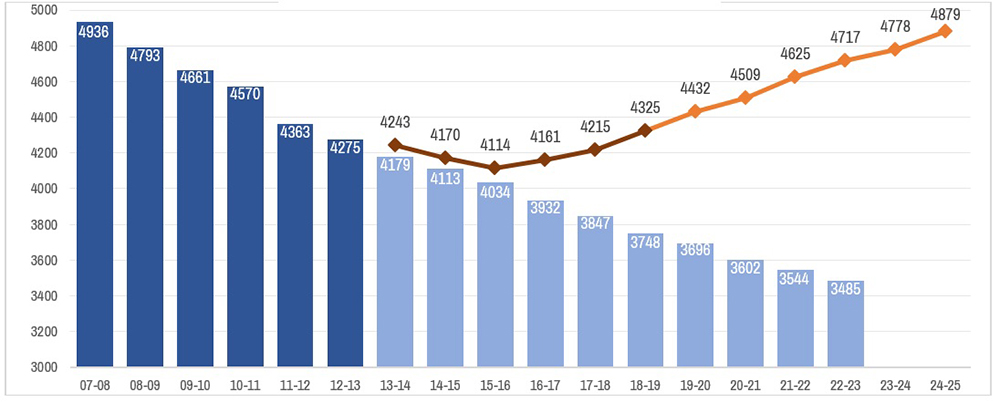
The blue bars in the chart reflect historical and projected enrollment calculated when the ten-year plan was adopted in 2013. By contrast, the orange trend line illustrates the changes in actual enrollment since 2013, as well as the new enrollment trajectory calculated by demographers in 2018.
Demographers have pointed to high levels of in-migration - people coming to South Windsor from other towns, states and countries - as one of the reasons that forecasting enrollment in South Windsor has been challenging. Early in the project, local realtor Margaret Shea of Shea & Co. Real Estate commented on the relationship between high quality schools and property values. “Good schools and buildings attract buyers to the community. The foremost reason prospective home buyers choose South Windsor is for our schools.” One might then ask the question that many have pondered: If you build it, will they come?
As it relates to the town’s economy and infrastructure, this growth has been characterized by BOE member Rick Stahr and others as “a good problem to have.” However, the impact of increasing enrollment on South Windsor schools and the ten-year plan specifically has not been without its challenges.

Impact on Phase One: Orchard Hill was originally expected to open with 500 students in grades K-5, and 76 students in its PreK program. On the first day of school in 2017, Orchard Hill opened with 563 students in just grades K-5 (not including PreK), and the student population has grown to 630 students today. After only one year, to address space needs resulting from this increase in enrollment, the district’s preschool program was relocated from the new Orchard Hill building to available space at one of its nearby secondary schools.
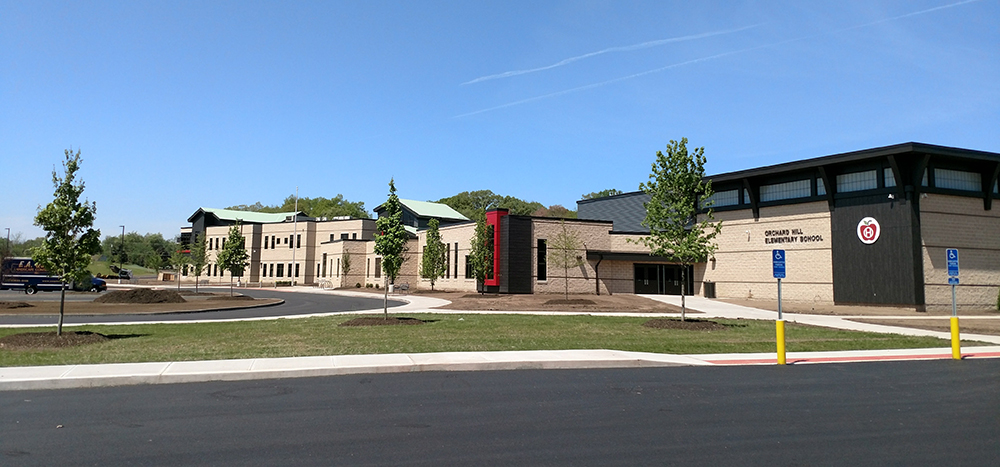
Impact on Phase Two: In late 2018, in response to refreshed enrollment projections, the board of education approved revised educational specifications for both Phase Two schools which allowed for the inclusion of two additional classrooms at Eli Terry and three at Philip R. Smith. These changes were made just months before groundbreaking for each of these schools.
Impact on Phase Three: The town’s unexpected spike in K-5 enrollment had implications for Pleasant Valley as well. During the summer of 2018, four portable classrooms were added onto the existing Pleasant Valley building. As part of the early planning for Phase Three, in March the South Windsor town council approved the purchase of two parcels of land which abut the Pleasant Valley campus. This will offer the space and flexibility for siting this now larger Phase Three school, and allow Pleasant Valley students and staff to remain in their building during construction.
The Current Status of South Windsor’s Ten-Year Plan
On August 30, 2017, Orchard Hill Elementary School opened its doors for the very first time to the children of South Windsor. The response has been overwhelming! This beautiful, brand new 71,729 s/f building boasts a number of improvements, both structural and technical, including enhanced school safety features, an environmentally conscious design, breakout instructional spaces complete with seating and whiteboards, bathrooms in all K-2 classrooms, and interactive modern technology suitable for 21st century learners. A separate bus and parent drop-off area have provided more efficient and safe vehicle and pedestrian traffic patterns. Best of all, the new facility was delivered on time and under budget!
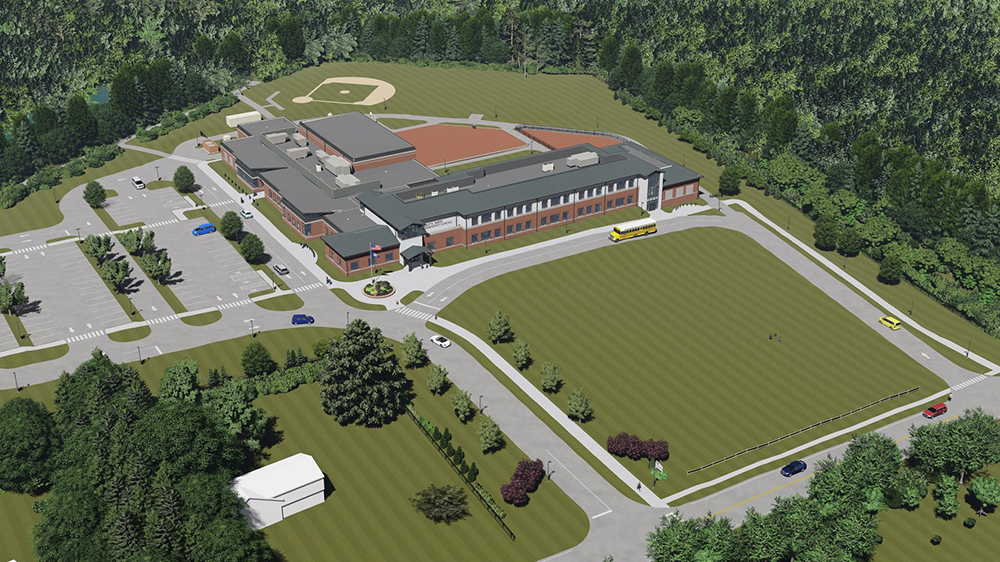
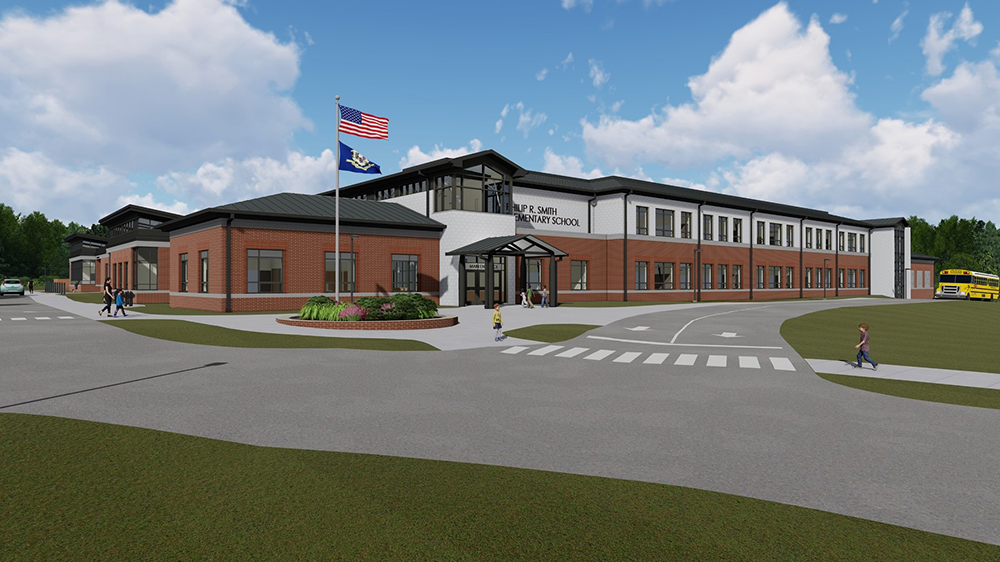
Wapping Elementary was closed in June 2017 just prior to the opening of Orchard Hill. Saying goodbye to part of the community’s history wasn’t easy, but the district sought to handle all aspects of the closing thoughtfully and respectfully. Communication with families and staff at every stage was integral to this approach. In a letter to families, Dr. Carter reflected on her pride in the process. “While school closures [across the state] seem to be bringing out the worst in other communities, the closure of Wapping brought out the best in ours. Parents, please know that the gracious way in which you have responded to this school closure is truly a gift to your children in the form of an essential life-long skill. You are modeling how to manage change in the most positive of ways.”
In July 2017, the Wapping building was repurposed for use by both the board of education and town departments. It is currently used as an annex for several high school classes (whose campus abuts Wapping), and serves as the new home of the town’s parks and recreation and building maintenance departments. The town’s community center (once home to parks and rec) is now used exclusively for adult and senior services, human services, and youth & family services.
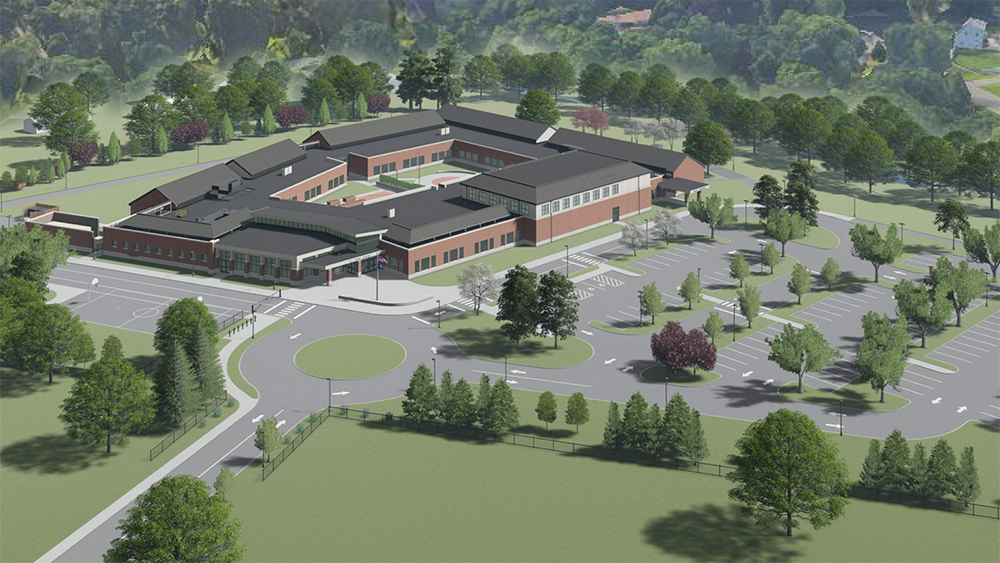
The district is currently in Phase Two of its plan. Philip R. Smith students and staff seamlessly transitioned to their swing space location in August 2018. Both schools have broken ground, the existing Philip R. Smith school building has been demolished, and each school is scheduled to open in August 2020.
Plans for Phase Three Are Underway
SupportSouthWindsorSchools.org is hard at work promoting the project at meetings and community events. This summer, the district will begin drafting the educational specifications and cost estimates, which will go to the board of education for approval this fall. If approved in the town referendum next March, the project will officially commence.
School construction is about more than bricks and mortar. The success of South Windsor’s ten-year elementary facilities plan is a symbol of what can be accomplished when the goals are clear and everyone is working together toward the greater good.
Craig Zimmerman, chairman of the board of education and a member of the public building commission, could not be more proud of the project’s outcome to date. “When I started in first grade over 50 years ago, South Windsor families were in the process of making a major investment in education by building five new elementary schools. I am so proud that the members of this town –regardless of age, demographics, or party affiliations–continue to demonstrate the same commitment to a quality education for both today’s and tomorrow’s students.”
Certainly this message transcends school construction projects and facilities planning. The work in South Windsor is about a community investing in its children. And maybe this lesson from a small town in north central Connecticut is the most important outcome of all.
To learn more about this special project, visit the district’s website:
www.southwindsorschools.org/elementaryfacilities








